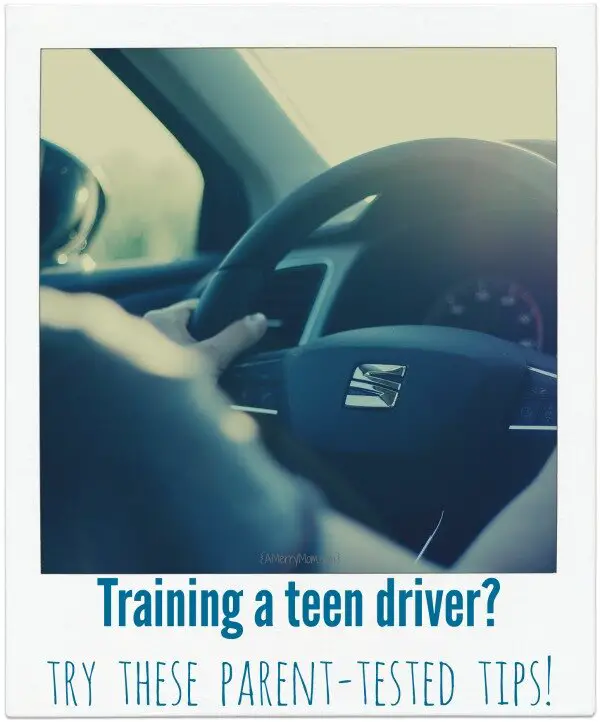Parenting is a tough job. As a mom, there always seem to be new challenges to address. My newest challenge: training my 16-year-old son to drive.
It was a huge milestone taking my son for his learner’s permit. In our state, that means he now has to accumulate 60 hours of driving practice with an adult driver before he can take the driving test to get a driver’s license.
My husband and I have been sharing the driver training duties and generally take turns in the passenger seat when our son is practicing his driving. We’ve also been collecting information online and from other parents to help us with this new parenting task.
Today I’m sharing some of what we’ve learned as tips for training teen drivers.
- Take the teaching aspect seriously. According to a 2016 research report by Safe Kids Worldwide, 75% of teens reported that the time they spent practicing driving with their parents was the most helpful aspect of learning to drive. The CDC reports that motor vehicle crashes are the leading cause of death for U.S. teens. It is enormously important to make sure teens are properly trained to handle the responsibilities of driving.
- Before starting, make sure your teen realizes you are not going to argue about your driving instructions. You’re there to instruct based on your years of experience, and a student driver is there to learn. Be open to discussion but not argument.
- Keep things as relaxed as possible when training teen drivers. Parents and teens who are new to driver training will be understandably nervous, but learning and driving are both best in a calm environment. If things get tense with a new driver, stop the driving lesson and try again a different time. Also, don’t use the driver training time spent together to bring up subjects that may cause tension, such as criticism over grades or other behavior issues.
- Be positive, and don’t just focus on things to improve. Praise your teen for the things done well. Talk up their progress.
- Be specific about things the teen driver needs to adjust. Not: “You’re always driving too fast.” Instead: “Note that the speed limit is 25 here, and you need to slow down.”
- When answering questions, it’s helpful to say “correct” instead of “right” since that may sound like a direction.
- Make it clear up front when an instruction is not urgent. For example, if you say “go ahead and change lanes,” a student driver may change lanes quickly and less safely than if you preface it by saying “whenever you can, change lanes.”
- As a driver gains skill, vary the route you use for training. According to research reported in an article from The Wall Street Journal, practicing on different roads that are progressively more challenging can help reduce teen crashes.
- It’s tempting to keep newbies from being behind the wheel when conditions are less than ideal, but they need to learn to handle all types of driving scenarios. As they gain experience, practice driving in varying conditions, including darkness, rain, snow, wind, heavy traffic – whatever your new driver may encounter on their own. Talk in advance about how to handle issues such as slick roads and hydroplaning.
- Focus on skills that will make a student driver more safe. Parents often spend a lot of time on skills that are perceived as tricky, such as parallel parking. However, The Wall Street Journal article points out: “Most people don’t get killed parallel parking,” says Deborah Hersman, president of the National Safety Council. “The most important things parents can teach teens are how to develop hazard recognition and judgment—making the left turns into oncoming traffic, how to merge on and off highways at high speed.”
- Teach defensive driving techniques. These include leaving a safe distance between cars, checking mirrors regularly to be aware of surroundings, and watching for other drivers’ unsafe actions.
- Talk about travel routes and traffic flow to help new drivers navigate smoothly and confidently. Point out safe ways to deal with unexpected circumstances such as a missed exit or a road closure.
- When teens are ready for their driver’s license, consider a parent-teen driving agreement that establishes expectations and consequences. Find sample agreements from the CDC, Safe Kids Worldwide, or an insurance company such as Travelers, Liberty Mutual, or Allstate.
Do you have more tips for training teen drivers? Please share them in the comments below!



